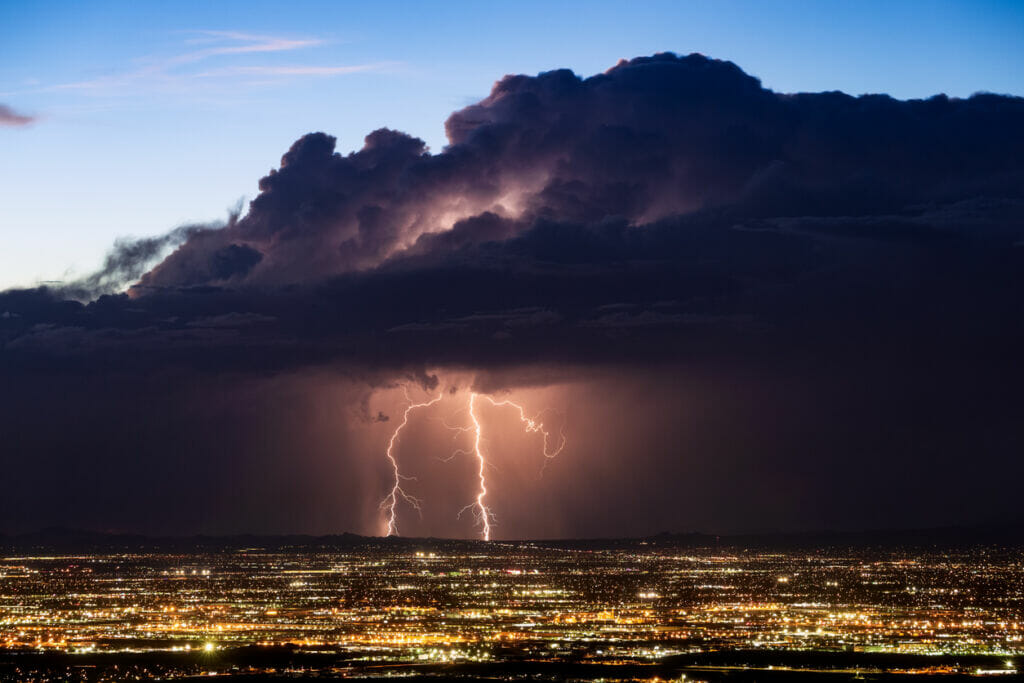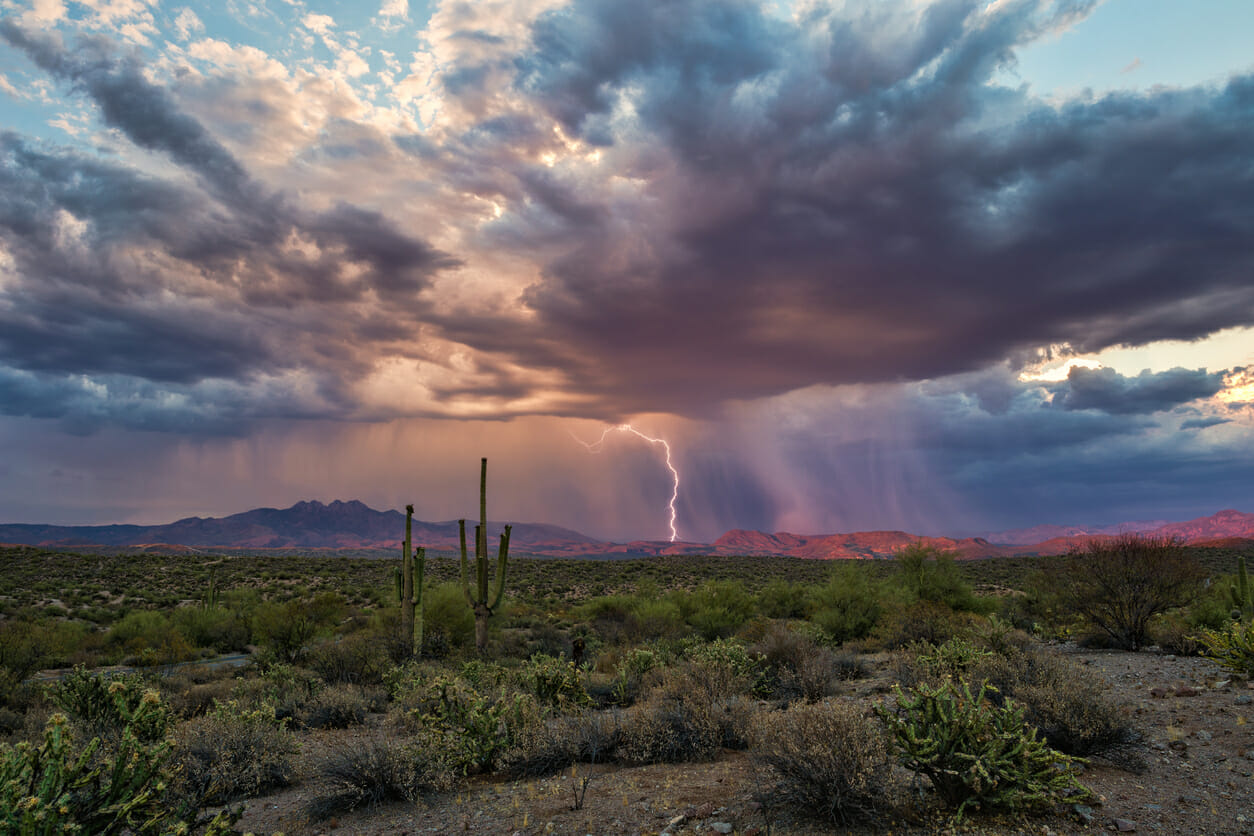Whereas other regions of the nation navigate earthquakes, tornadoes and floods, Arizona contends with monsoons. The Grand Canyon State braces itself for these unpredictable meteorological experiences from mid-June through the end of September. While monsoons typically — and thankfully — don’t result in massive destruction, they can wreak havoc, including power outages. As many Arizona businesses have come to learn, an unexpected power outage can be especially costly and disruptive.
READ ALSO: Most Influential Women: Leslie Meyers, Salt River Project (SRP)
Monsoons and power outages
A powerful monsoon can bring high winds, walls of dust, torrential rain, flooding and lightning, which can suddenly affect Salt River Project’s (SRP) electric system and its customers.
To help businesses prepare for monsoon season and mitigate potential disruptions, SRP is dedicated to educating, empowering and supporting workplaces by providing free and accessible resources. Continue reading to learn more about types of power outages, what to include in your business monsoon preparation plan and how to track and report an outage.
Types of outages
While SRP conducts what are referred to as “planned outages,” or “maintenance outages,” as preventative measures, or for when new construction and/or for service enhancements are needed, these usually have little to no impact on customers. But, what happens when an unplanned outage, such as a weather-induced disturbance occurs (Arizona’s monsoons as a perfect example)?
To better understand the relationship between monsoons and power outages, it can be helpful to learn about the electrical systems that support the area where your business is located.
There are two types of electrical systems: radial and looped.
- Radial electrical systems, standard in the 1960s, have one source of electricity that feeds the distribution system making it more difficult to restore power quickly.
- Loop electrical systems have a primary electricity source and a secondary circuit, often allowing quicker and more efficient power restoration during an outage.
“Our transmission and sub-transmission are almost completely looped,” says Doug Gooch, Strategic Distribution Manager at SRP. “A looped system provides SRP with more options for quicker restoration of power to our customers.”

Preparing your business
Another way in which SRP helps safeguard its business partners in the event of a weather-related outage is by helping them plan and prepare.
One of the best proactive steps your business can implement is creating a continuity plan. Having this type of preparedness strategy will empower your workplace to remain informed and organized in the event of an outage or emergency.
An outage/emergency continuity plan often includes:
- Establishing critical business functions and people needed to execute them, including any training necessary for your staff to carry out specific duties.
- Sharing outage/emergency agreements, procedures and other essential information with workplace staff and vendors.
- Enacting a communications plan (assign a main point of contact to relay critical information to the rest of the team).
- Equipping employees to work remotely, ensuring they have the technology, tools and other resources needed.
- Making sure there is an effective way to back up crucial documents electronically.
Additional preventative measures that businesses have found helpful in a continuity plan include:
- Maintaining an inventory of all onsite equipment.
- Acquiring a backup power source (battery and flywheel uninterrupted power supplies (UPS) and generators as examples).
- Testing emergency systems regularly.
- Incorporating a computer/technology recovery strategy/system.
- Keeping up-to-date floor plans (marking emergency shut-off locations, controls for security alarms and fire suppression, as examples).
Reporting or checking on an outage
In the event a summer monsoon triggers an outage, SRP makes it easy for your business to report an incident — offering 24/7 support. Outages can be tracked and reported in a number of ways, which include:
- Calling SRP directly at 602-236-7771 — any day, any time.
- Visiting SRP.Net and accessing the “View Outages” page (click the lightning bolt!).
- Downloading the SRP Power mobile app.
When you do report an outage, mainly by phone, it’s helpful to relay as many details as possible, including the location, time and extent of the event.
“In the event power does go out, please know our crews that are on the ground are working diligently to get it restored and our goal is always to get power restored as quickly, efficiently and safely as possible,” says Pat O’toole [insert title here], at SRP.
Learn more about how to plan for monsoon and other weather-related power outages, and connect with us @SRPconnect on Facebook and Twitter.




